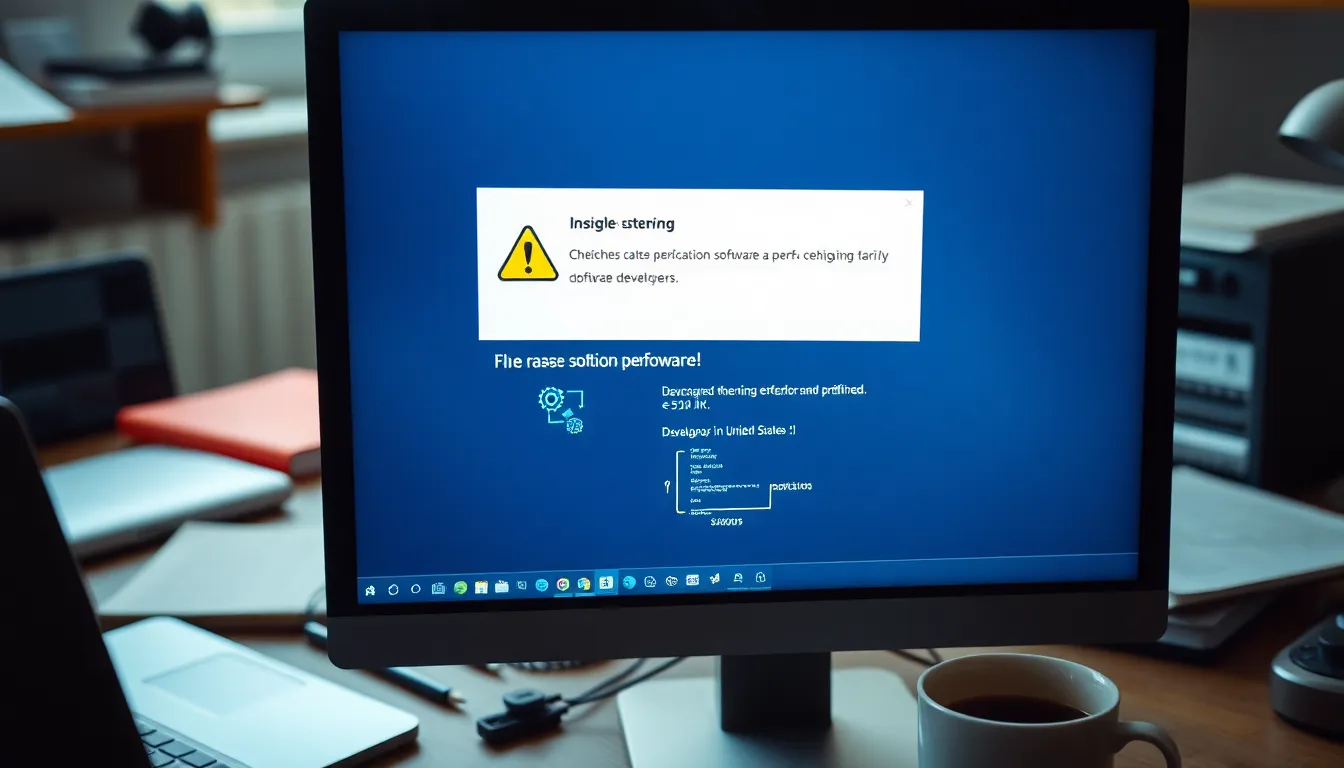In the chaotic world of software development, encountering a bizarre error like “llusyep” can feel like finding a unicorn in a haystack. It’s the kind of glitch that leaves developers scratching their heads and users wondering if their computer’s just playing tricks. But fear not! This quirky error, while perplexing, offers a treasure trove of insights into the quirks of coding and the importance of robust debugging.
Understanding the “llusyep” error isn’t just about fixing a bug; it’s about embracing the unexpected twists that come with technology. With a dash of humor and a sprinkle of patience, tackling this software hiccup can become a memorable adventure. So, buckle up as we dive into the wacky world of “llusyep” and discover how to turn this perplexing puzzle into a learning experience that’ll sharpen your coding skills and keep your software running smoothly.
Software Error Llusyep
Software error “llusyep” presents a unique challenge in development. Its unusual nature often leads to confusion among both developers and users.
Definition of Llusyep
Llusyep refers to a non-standard software error characterized by unpredictable behavior. Developers frequently encounter this error in varying contexts, with effects ranging from simple glitches to significant system disruptions. Similar to cryptic anomalies, llusyep appears without warning, complicating debugging efforts. Understanding its specific traits supports effective resolution strategies. This error often highlights underlying issues in code architecture, encouraging developers to enhance their problem-solving skills and refine code quality.
Common Causes of Llusyep
Multiple factors contribute to the occurrence of llusyep. Flawed logic in algorithms often triggers this error, creating unexpected outcomes. Insufficient error handling can also lead to this bug, as unanticipated inputs escape detection. Memory leaks frequently play a role, causing instability within applications over time. Additionally, inconsistent data types may confuse the software, resulting in the manifestation of llusyep. Lagging dependencies or outdated libraries further exacerbate the situation, underscoring the need for regular updates and maintenance.
Identifying Symptoms

Recognizing symptoms of the “llusyep” software error is essential for swift resolution. Developers should pay attention to specific indications that can elucidate underlying issues.
Error Messages to Look For
Look for ambiguous error messages that may emerge during software operation. Unexpected notifications often signal the presence of the “llusyep” error. Users might encounter messages that do not align with their actions, indicating a deeper issue within the code. Additionally, cryptic codes or languages that lack clarity often accompany this error, complicating diagnosis. Pay close attention to any patterns in these messages to assist with pinpointing the specific problem area within the application.
Impact on Software Performance
Software performance can degrade significantly when the “llusyep” error occurs. Users frequently notice decreased responsiveness or prolonged loading times. Visual glitches and unexpected crashes can also manifest during interaction. Developers often find that these performance issues stem from the error’s chaotic nature, leading to inefficient resource utilization. System logs may show excessive memory usage or unhandled exceptions, highlighting the need for immediate attention. Resolving these issues not only enhances performance but also reinforces overall stability in the application.
Troubleshooting Software Error Llusyep
Troubleshooting the “llusyep” error requires systematic identification and resolution of underlying issues. Developers must delve deep into their software to discover the causes of this elusive error.
Step-by-Step Guide to Diagnosis
Start by reviewing recent code changes. Examining updates often reveals missteps that lead to the “llusyep” error. Next, isolate components one by one to identify which part of the system causes unexpected behavior. Running unit tests helps in revealing discrepancies in logic or output. After that, checking logs provides insights into error messages associated with the issue. Observing patterns in these messages often aids in narrowing down potential sources. Finally, replicating the issue consistently is crucial for an accurate diagnosis and effective troubleshooting.
Tools for Detection
Utilize debugging tools that facilitate error detection and code analysis. Integrated Development Environments (IDEs) like Visual Studio Code or IntelliJ IDEA offer features for tracking down errors efficiently. Consider employing static analysis tools such as SonarQube to catch potential issues before execution. Profiling tools like JProfiler assist in identifying performance bottlenecks related to the “llusyep” error. Additionally, error monitoring platforms like Sentry can automatically capture and log errors in real-time, providing details necessary for resolution. Each of these tools enhances understanding of code behavior and facilitates effective troubleshooting efforts.
Preventing Software Error Llusyep
Developers can take proactive steps to prevent the occurrence of the “llusyep” error through careful practices and regular maintenance.
Best Practices for Software Development
Implementing best practices in coding significantly reduces the likelihood of encountering the “llusyep” error. Prioritize code reviews, as peer assessments often reveal hidden issues. Use version control systems to track changes and simplify the identification of problematic updates. Write clear documentation to enhance team collaboration and maintain consistency. Incorporate unit testing to validate individual components, ensuring they function correctly before integration. Utilize consistent coding standards to reduce ambiguity and prevent logic errors. Each of these strategies fosters a robust development process, minimizing the risk of unpredictable software behavior.
Regular Maintenance Tips
Ongoing software maintenance plays a crucial role in preventing the “llusyep” error. Schedule routine updates to libraries and dependencies to avert issues stemming from outdated code. Conduct regular performance reviews to identify potential bottlenecks and improve efficiency. Engage in code refactoring sessions to streamline functionality and enhance readability. Monitor system logs to catch emerging errors early before they escalate. Regular backups allow developers to restore previous stable versions quickly when complications arise. Following these maintenance tips strengthens the overall software architecture and diminishes the chances of encountering the “llusyep” error.
Improved Coding Practices
The “llusyep” error serves as a reminder of the unpredictable nature of software development. While it can be a source of frustration for developers and users alike, addressing such glitches can lead to valuable insights and improved coding practices. Embracing the challenges posed by this error encourages growth and enhances problem-solving skills.
By understanding its causes and symptoms, developers can take proactive steps to prevent its occurrence. Implementing best practices and utilizing the right tools can greatly improve software stability and performance. Ultimately, the journey through debugging the “llusyep” error can transform a frustrating experience into an opportunity for learning and professional development.



